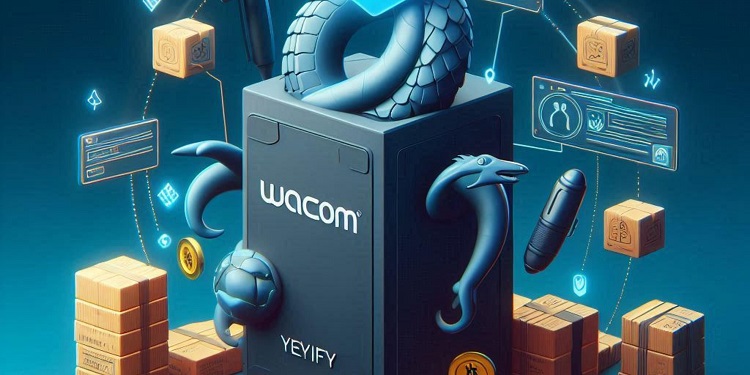Wacom has introduced a new service, Wacom Yuify, to address the impact of generative AI on digital art ownership. This service, currently in beta for Adobe, allows digital artists and photographers to permanently record their ownership of their work on the blockchain, thus enabling them to control the legal use of their images through licensing.
Yuify is already available as a plugin for Photoshop, a development seen as somewhat ironic given Adobe’s stance on content use. Beta versions are set to be released for Clip Paint Studio by the end of June, with the exceptional Rebelle following shortly after. This move is part of a broader effort by Wacom to provide digital artists with tools to safeguard their work in an era increasingly dominated by AI technologies.
Wacom CEO Nobutaka Ide, speaking at this year’s VFX Festival, outlined the company’s approach to AI. He emphasized that Wacom does not oppose AI but rather aims to provide artists with tools to self-authenticate and manage their artwork. Ide clarified that Yuify is not intended to serve as a protection scheme for large platforms but as a tool for artists to ensure the authenticity and ownership of their work. He stressed the importance of protecting an artist’s portfolio and maintaining the integrity of the engagement between an artist and their work.
The use of blockchain technology might raise concerns among artists who have been skeptical of NFTs, but Ide explained that Yuify is not about corporate profit. Instead, it leverages the immutable nature of blockchain and self-sovereign identity (SSI) technology to create a digital footprint for art ownership. This approach aims to offer a reliable method for artists to verify and manage their creations.
Yuify operates through a straightforward process. After an artwork is created and exported via Yuify as a JPEG or PNG, it embeds an invisible ‘micro-mark’—non-destructive pixels—into the image. This mark is permanently connected to the artist on the blockchain. This allows the artist to trace the image, and a tool called Yuifinder can be used to discover the image’s creator by simply dragging and dropping images into the tool.
Additionally, Yuify, which is part of the Creative Rights Initiative, provides a License Builder tool. This allows artists to set terms for the use and reuse of their images, with these licenses recorded permanently on the blockchain. This capability ensures that artists retain control over their work and can provide evidence of authorship and ownership. While Nobutaka acknowledged that this tool is not a complete solution for preventing art scraping, it represents a significant step forward in protecting digital art.
One notable aspect of Yuify is its accessibility. Artists do not need to use a Wacom drawing tablet to utilize Yuify; it can be used with any of the best drawing tablets currently available. This makes the service widely accessible to digital artists regardless of their hardware preferences. Those interested in trying Yuify can sign up for the Wacom beta program.
In summary, Wacom’s introduction of Yuify marks a significant advancement in the protection of digital art in the face of generative AI challenges. By combining blockchain technology with tools for self-authentication and license management, Wacom is providing artists with a means to secure their work and maintain control over its use. This initiative underscores the importance of preserving the integrity and ownership of digital art in an increasingly AI-driven landscape.
